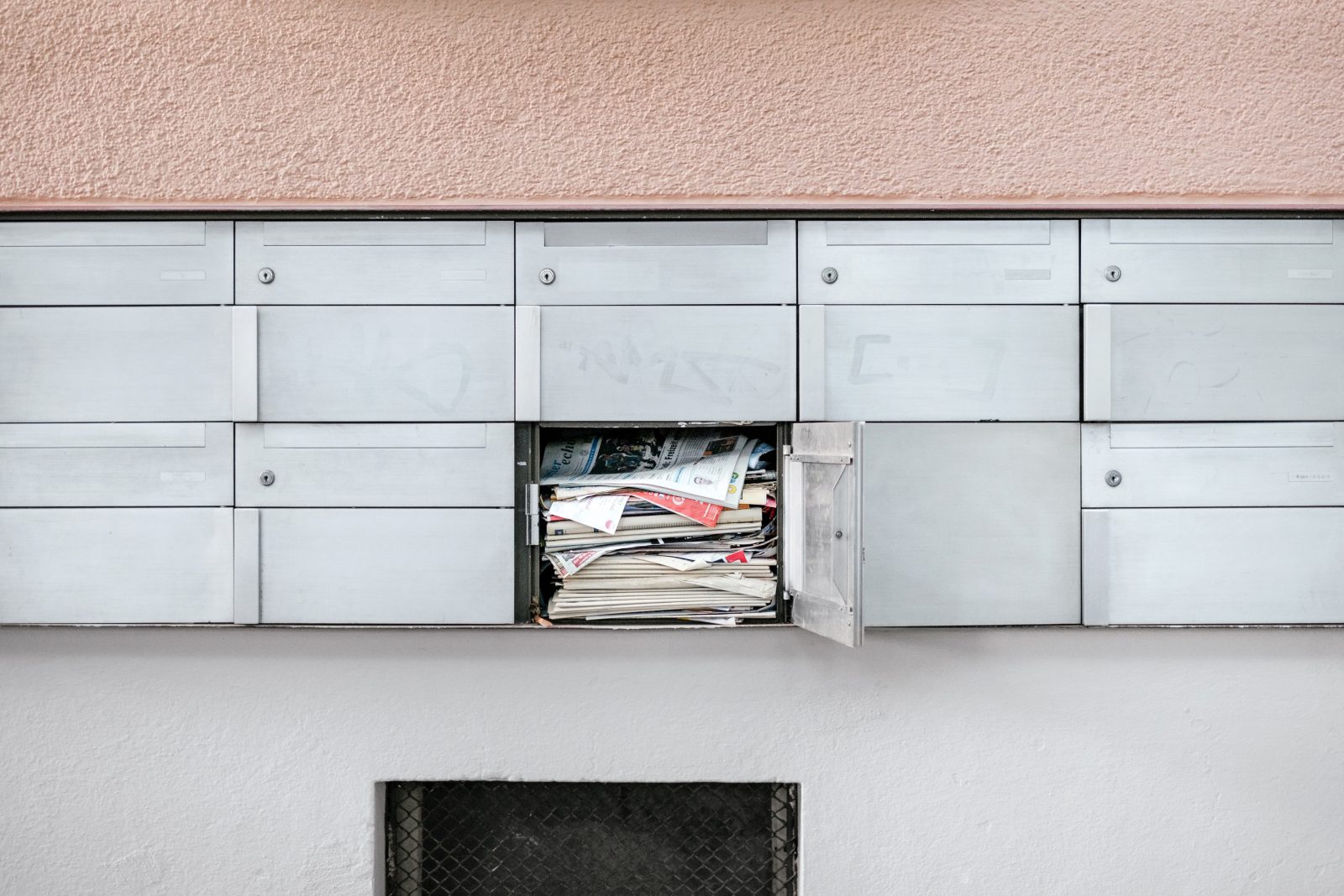Email spam. Anyone with an email address has probably encountered it. While anti-spam software and filters trap a lot of unwanted messages, spam still accounts for 45% of all emails, according to SpamLaws.com.
While most spam comes from suspicious sources that are trying to scam subscribers, sometimes reputable brands accidentally create spammy messages. These messages are most often flagged by a spam filter and dropped into the spam folder rather than the inbox.
As a marketer, you obviously want to avoid the spam folder at all costs. To make sure your emails arrive in subscribers’ inboxes without incident, here’s what you should know about spam.
Understanding email spam
Most people define spam as junk mail. While it may seem like a basic definition, it’s actually a good one. A more detailed definition would be unsolicited, irrelevant emails that land in your inbox.
Spam is usually sent out in bulk email “blasts” in hopes that someone will open it. Sometimes it’s sent by a legitimate company hoping to drum up some business, but some spam is sent by dubious individuals who are trying lure people into a scam. Regardless of the purpose, these emails are sent without a recipient’s permission and are considered spam.
But not all spam is sent by cyber-criminals looking to take advantage of people. Even the most trusted businesses might be sending spam without knowing it.
How do filters and anti-spam software detect spam?
Anti-spam software and filters scan emails for red flags. These red flags are based on common attributes of spam messages.
In the time an email is sent, to the time it lands in your inbox, filters will examine an email and decide whether it gets delivered to your inbox or into the spam folder.
When an email is sent to you, your Internet Service Provider (ISP) and email inbox provider, like Gmail or Yahoo!, will send it through the filters they’ve built into their systems. There are many things taken into consideration including the content of your emails, how often you send, and your sending reputation. The filters look at specific parts of an email, such as the subject line, email content and even the header data. The header data is like an email’s GPS. It tracks where an email came from, where the email goes and when it arrives at various stops. The filters look at this data for anything out of the ordinary and demotes emails to the spam folder if anything is out of place.
In addition, there are global lists of spammers called blacklists. If a filter spots an email sent by a spammer on the list, the email is banned from the inbox.
Filters are checking the message too; looking for telltale spamming signs. Emails with suspicious subject lines, messages with a glut of images, or shortened URLs – just to name a few. If you aren’t aware of these red flags, you might be unknowingly sending emails that are labeled ‘spam.’
The constant evolution of spammers and spam filters
Spammers are clever. They know how spam filters work and are constantly evolving to trick the filters into delivering their message. Fortunately, as spammers evolve, so do the various filters. And inboxes have evolved too, giving the user more tools to control what they see.
Email inbox providers have made it easy for subscribers to flag an email as spam. For example, let’s say you receive an email that’s touting a remedy for the common cold, and you have no idea where this email came from. You can mark it as spam and banish it to the spam folder.
Filters for inbox providers examine emails from subscribers all over the world that are marked as spam. They look for similarities and use the information to strengthen their filters. Essentially, subscribers are teaching spam filters what’s spam and what isn’t.
The fact that spam filters are evolving is good– it keeps the Internet a safe place for users. However, in an effort to be as safe as possible, these spam filters may occasionally catch emails from your brand. It’s up to you to learn how to send better emails so that your messages never hit the spam folder.
How to send better emails and avoid spam filters
Subscribers typically punish senders by marking unsolicited emails as spam. Once there, you start to get a bad reputation with email filters so it’s a dangerous path to start down.
Wondering how to avoid spam filters? Here’s how to make sure your email campaigns aren’t marked as spam.
Only send emails to subscribers who’ve opted in
One of the cardinal rules of email marketing is to only send emails to those who knowingly join your list. That means, you shouldn’t buy a list and send emails to people who don’t know you or your product, and you shouldn’t assume that just because you exchanged business cards with a new contact at a trade show that he or she wants your emails
To make sure subscribers want to receive your messages, create a double opt-in process for all email contacts. When someone voluntarily joins your email list, you send a confirmation email to that account to make sure they agree to receive your emails.
Welcome new subscribers quickly
As new subscribers join your list, don’t wait too long to make contact. If you wait, a subscriber might not remember signing up for your list and mark it as spam.
To avoid this, send a welcome email to new subscribers within the first 24 hours. You don’t have to watch your list and manually send an email, you can automate this process. Create an automated welcome email that every subscriber receives and trigger it to send as soon as a new subscriber joins your list.
The email should offer a friendly hello and define your new email relationship like this one does from Flight Centre, a travel booking company.

Personalize your emails
Spam filters look for evidence that you know the person you’re emailing. You can easily do that by personalizing the email. Use ‘merge fields’ to add a subscriber’s first name to a subject line or a subscriber’s job title to the body of an email or use other data you have about your subscriber to further personalize your messages.
Not only will personalization methods keep spam filters happy, it also improves your open rates. Research shows emails with personalized subject lines are 26% more likely to be opened.
Send emails from your company domain
Serious email marketers send emails from reputable company email addresses, not free accounts like Gmail or Hotmail.
Spam filters are looking for authenticity, and emails with @gmail.com or @hotmail.com count against you.
Aside from setting up a company email address, make sure the ‘from name’ is reputable too. An email from [email protected] doesn’t inspire much confidence.
Here’s a great example from CoSchedule where the ‘from name’ reads “Breonna from CoSchedule.” When a subscriber rolls over the contact in Gmail, the full email address and a picture appears.

Avoid spam words
Spam filters are looking for “buzz words” that spammers love to use. There’s a list of the most notorious spam words from Mequoda below. Some of them are obvious phrases that scammers would use, like “earn extra cash” or “100% free,” but there are others that legitimate brands would use like “free gift” or “order now.”

You should try to avoid the words on the list, but if you’re offering a free gift as a promotion, the words “free gift” are hard to avoid. If you’re using any of the spam words, make sure you provide context. For instance, “Jill, you can receive a free gift with a $20 purchase at Bob’s Market,” is a great way to provide evidence of a legitimate offer. Or, you can use any of these 15 power words.
Avoid link shorteners
Spammers shorten links because they typically don’t want anything in the email that can identify their whereabouts, so if a spam filter sees shortened links it’s a red flag.
As a marketer, knowing this piece of information is important. After all, using link-shortening tools, like Bitly, is common practice. But, it’s important to avoid shortened links in your email.
Use an email service provider with a spam test
Many email service providers offer a spam test, that gives marketers the ability to scan through a spam filter before it’s sent.
Campaign Monitor customers, for example, can run a spam test and get a list of spam-prevention tips like this:

This feature helps provide an additional layer of protection to keep your emails from hitting the spam folder.
Wrap up
While spam is a common problem, knowing how it’s detected and sent to unseen folders is less understood. Using the information above, you can create your next campaign with confidence knowing that you’ve taken precautions to keep your messages out of spam folders.





